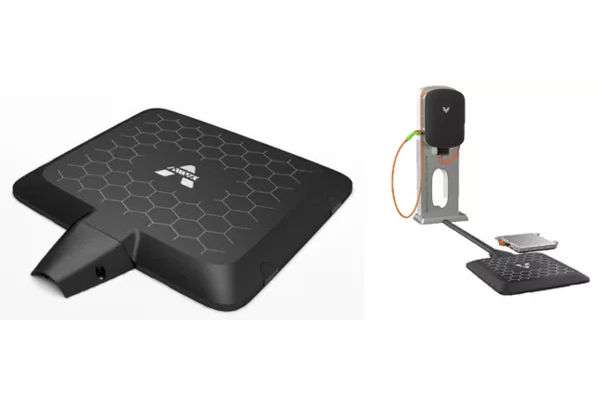Wireless Charging Unit for EVs Made Possible With Zytel and Zytel HTN Solutions
As BEVs (battery electric vehicles) take to the road in higher numbers, suppliers forging ahead with wireless charging technologies are turning to flame-retardant Zytel polyamide and Zytel HTN solutions.
Imagine if you could charge your electric vehicle wirelessly, like the way you might use a charging pad to power up your mobile phone. Just by driving the car over a wireless charging pad and parking, your battery could be topped up as you shop or work, while you are underway or at home.
Wireless charging pads are closer to reality than you might think. At K 2022, DuPont Mobility & Materials will display just such an innovative system. It is the result of a successful collaboration with VMAX New Energy, a Tier One supplier to Greater China’s largest wireless charging infrastructure providers.
The VMAX wireless charging system is an 11KW wireless charger for EVs, and it consists of two parts: a vehicle pad that attaches to the car’s chassis, called a receiver, and a pad mounted on the ground, called a transmission plate, that is connected to a power source.
A flame retardant Zytel HTN housing for the transmission plate protects the inner wireless charging system, preventing damage from drops, wheel compression, chemicals, oils, and UV rays. The 30% glass filled PPA material is designated as HTNFR53G30NH.
Collaborating with VMAX, the automotive electrification team at DuPont Mobility & Materials has developed this Zytel HTN grade for high gloss and durability. The critical requirements met by this material include:
- Surface aesthetics that enable the elimination of paint
- Surviving a 10kN load rolling test
- IPX9 waterproof rating
- Resist damage from stone impact
- Service temperature range -40 to 120°C
- Resist degradation from UV and salt
- Electrical insulation (2kV)
- FR rating of UL94 V0 at 3 mm
- Dimensional stability, low warpage
In addition to the transmission plate’s housing, multiple other components in the receiver and transmission plate, including the vehicle-side coil housing and the ground-side coil holder, and are made using Zytel and Zytel HTN.
Wireless charging technology for EVs is in the early stages of development, but is growing in popularity because it:
- Improves speed and efficiency: Even with a 10-to-12-inch clearance between transmitter and receiver, the systems achieve over 90% efficiency.
- Removes the need for compatible plugs: There is no need to match the plug on the charging unit with the correct receptacle on the vehicle, which makes these systems much more convenient.
- Increases safety: Wireless operation avoids the risk of wires and connectors becoming damaged or wearing over time.
- Saves space: Power and charging components can be embedded underground.
BEVs are expected to be the largest market for these systems. Leading EV manufacturers are already offering wireless charging in some models, and government support is expected to drive demand and implementation of these systems.
For additional information about DuPont Mobility & Materials, visit www.dupont.com
#modernplasticsindia #plasticmagazine #indianmagazine #indianplasticmagazine #modernplasticsaward #ginujoseph #modernplastic #plasticindia #plasticnews #plasticrecycling #modernplasticsglobalnetwork #modernglobalnetwok #modernplasticsaward2022 #PlasticIndustry


